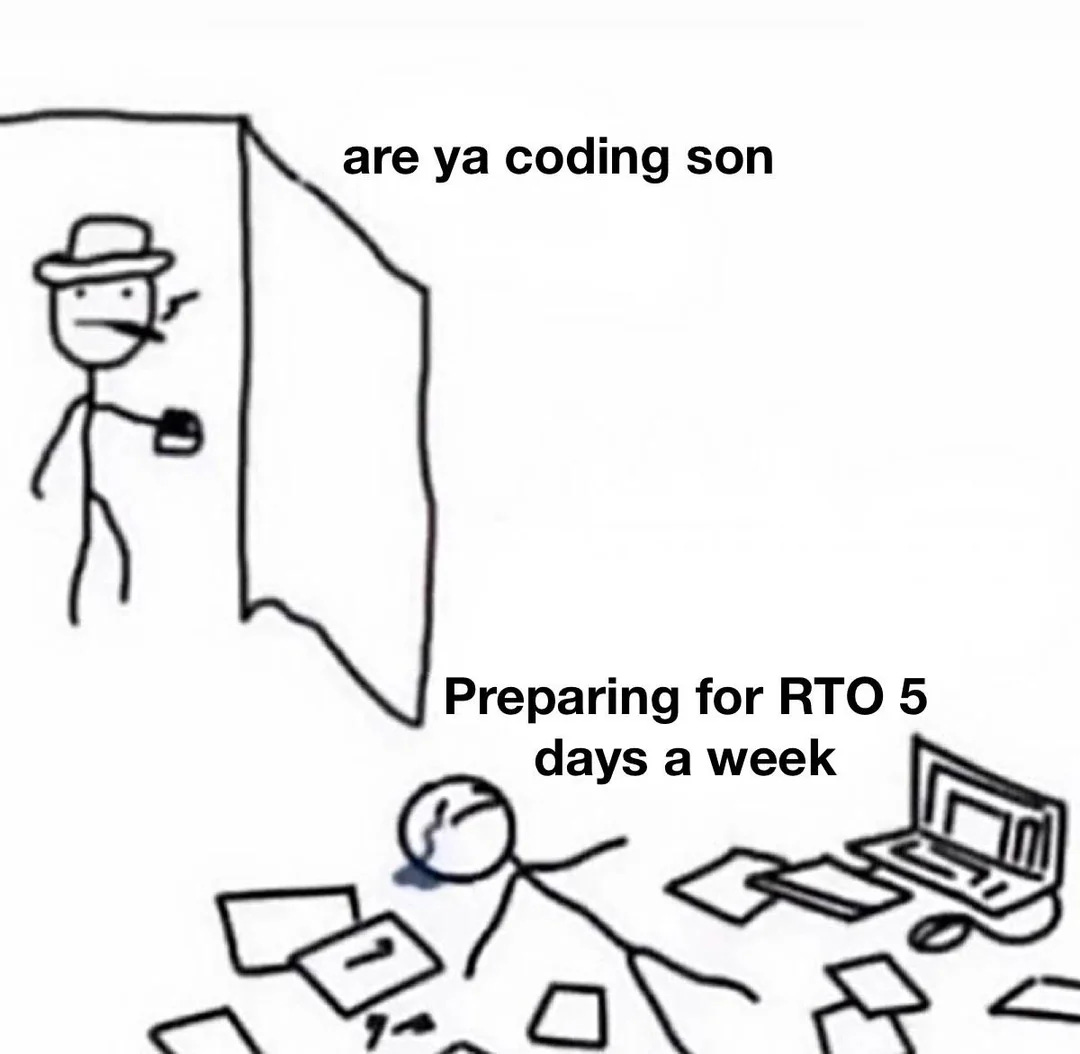The RTO (Return to Office) Trap: How Forcing Employees Back to the Office Is Just "Quiet Firing" in Disguise
Unmasking the corporate charade of "collaboration" and why your commute isn’t the problem—their balance sheet is.
“Return to office or else…“
Sound familiar?
Suddenly, after years of praising your “resilience” and “adaptability” in remote work, your company is demanding you haul yourself back to a cubicle.
But what if this isn’t about “synergy” or “culture”?
What if it’s a calculated move to make you quit—so they can dodge layoff costs and bad PR? Let’s rip off the corporate veil.
1. The Gaslighting Playbook: “We Miss Your Energy!” (No, We Miss Your Silence)
Companies are rolling out RTO mandates with tear-jerking emails about “reconnecting” and “innovation sparks.” But let’s decode the jargon:
Corporate Bingo Card
“Collaboration thrives in person!” → Translation: “We need attrition, not innovation.”
“Culture is our priority!” → Translation: “We’re betting you’ll quit before we fire you.”
“Flexibility is still an option!” → Translation: “Flexibility = 3 days in-office instead of 5. You’re welcome.”
The Reality:
Research consistently shows strict return-to-office (RTO) mandates correlate with significant workforce attrition. A landmark University of Pittsburgh study tracking 3 million LinkedIn profiles found:
9% overall turnover increase at S&P 500 firms post-RTO implementation
12% spike in female employee departures (3x higher than men) due to caregiving conflicts with rigid schedules
16% decline in retention intent among high performers vs. 8% for average employees
2. Why RTO Is the Cheapest Layoff Strategy
Layoffs mean severance, unemployment claims, and headlines.
RTO? Just a quiet purge.
The Math
Cost of Layoffs: 3–6 months’ salary per employee + legal fees + reputation damage.
Cost of RTO: A few pizza parties + free bad coffee.
Employees who can’t comply (caregivers, remote hires, anyone with a life) leave “voluntarily.”
No severance. No fuss.
3. The Hypocrisy Hall of Fame
Remember when your CEO bragged about record productivity during remote work? Now they’re claiming you’ll “fall behind” without watercooler chats.
The Cognitive Dissonance Awards Go To…
2023: “Remote work is the future!”
2024: “Office attendance is mandatory for career growth!”
4. Red Flags: Is Your Company Quietly Firing You?
Watch for these signs your RTO policy is a layoff wolf in collaboration sheep’s clothing:
Sudden Policy Shifts: No warning, no data to support RTO “benefits.”
Selective Enforcement: Targeting departments/roles they want to shrink.
Vague Feedback: “Your hybrid request was denied. Reasons? Vibes.”
5. Fight Back: How to Protect Yourself
Don’t let them win. Here’s your survival kit:
Toolbox for Resistance
Negotiate Hard: Request exemptions in writing. Cite past performance.
Document Everything: Save emails, track productivity, and build a paper trail.
Unionize or Mobilize: Collective action terrifies them. (See: Big Tech walkouts.)
Know Your Rights: Check local labor laws—some RTO mandates may qualify as constructive dismissal.
Pro Tip:
Start job-hunting now.
Update that resume (hey, we can help with that 😉).
6. The Future of Work: Will We Fall for This Again?
RTO isn’t just about real estate or control—it’s a test.
How much will employees tolerate?
The backlash is brewing:
Remote work advocacy groups are suing companies for discriminatory RTO policies.
Employees are naming and shaming on LinkedIn and Blind.
Unions are pushing back with “Right to Remote” clauses.
The Bottom Line:
If companies won’t value you, value yourself elsewhere.
Remember:
They need you more than you need their sad office snacks.
Warm regards,
George






